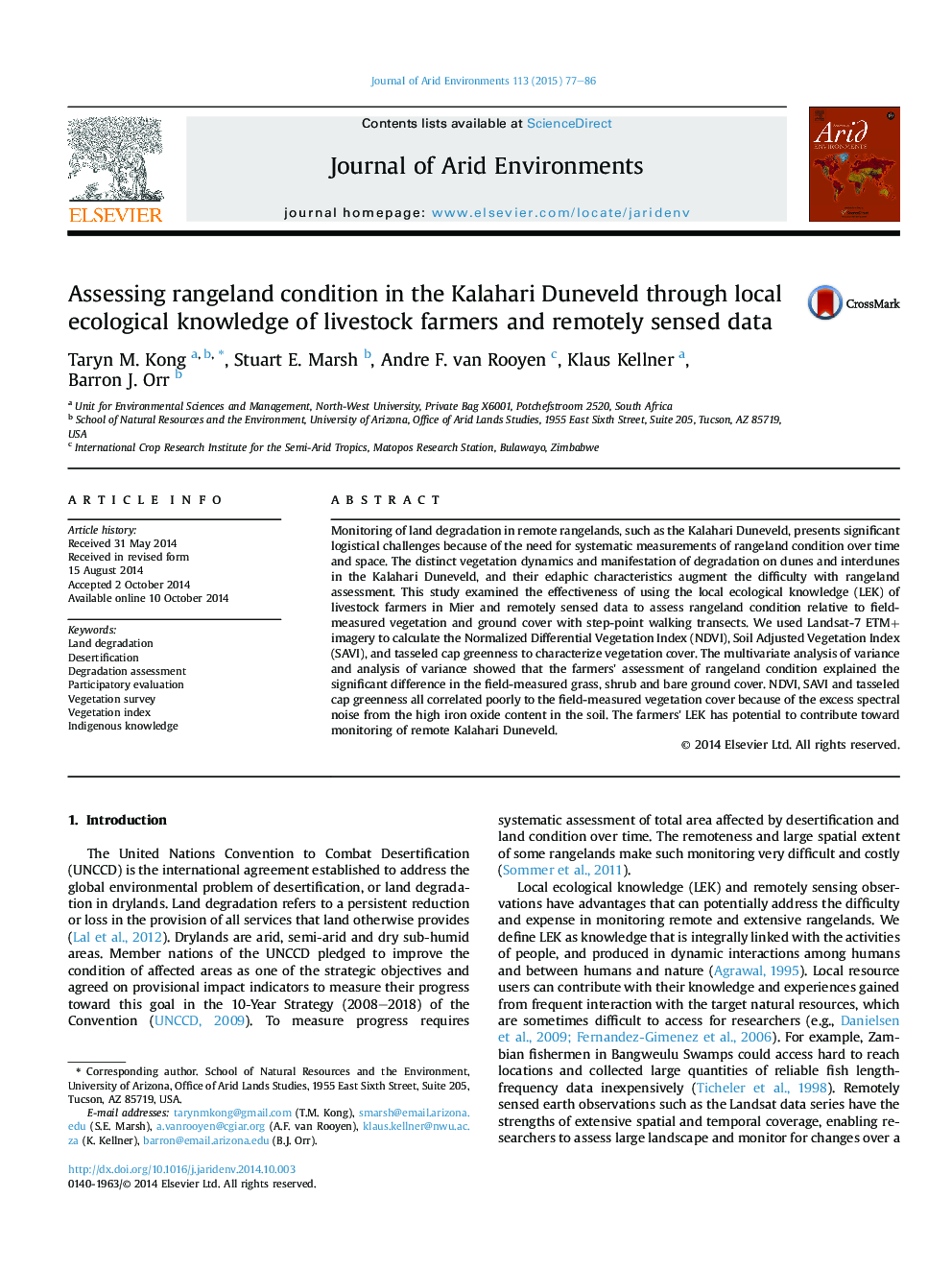| Article ID | Journal | Published Year | Pages | File Type |
|---|---|---|---|---|
| 4392885 | Journal of Arid Environments | 2015 | 10 Pages |
•Farmers determined veld condition by grass, shrub and bare ground cover.•Farmers' perception on veld condition overlapped with scientific knowledge.•Farmers' assessment explained the differences in field-measured vegetation cover.•NDVI, SAVI and TC greenness did not reflect the differences in field-measured cover.•The high red and NIR reflectance in soils made bare ground look like vegetation.
Monitoring of land degradation in remote rangelands, such as the Kalahari Duneveld, presents significant logistical challenges because of the need for systematic measurements of rangeland condition over time and space. The distinct vegetation dynamics and manifestation of degradation on dunes and interdunes in the Kalahari Duneveld, and their edaphic characteristics augment the difficulty with rangeland assessment. This study examined the effectiveness of using the local ecological knowledge (LEK) of livestock farmers in Mier and remotely sensed data to assess rangeland condition relative to field-measured vegetation and ground cover with step-point walking transects. We used Landsat-7 ETM+ imagery to calculate the Normalized Differential Vegetation Index (NDVI), Soil Adjusted Vegetation Index (SAVI), and tasseled cap greenness to characterize vegetation cover. The multivariate analysis of variance and analysis of variance showed that the farmers' assessment of rangeland condition explained the significant difference in the field-measured grass, shrub and bare ground cover. NDVI, SAVI and tasseled cap greenness all correlated poorly to the field-measured vegetation cover because of the excess spectral noise from the high iron oxide content in the soil. The farmers' LEK has potential to contribute toward monitoring of remote Kalahari Duneveld.
